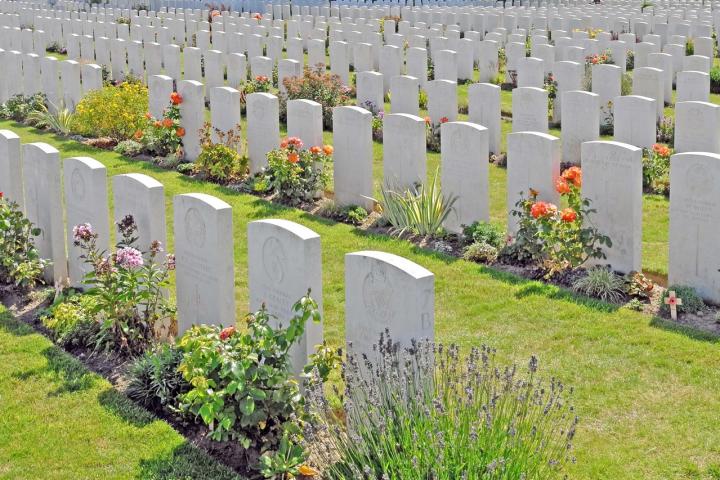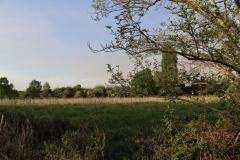
As reported last week Wilmslow has been chosen to hold a ceremony of commemoration to mark the centenary of the start of the Third Battle of Ypres – more widely known as Passchendaele.
The First World War battle in Flanders was notorious for its terrible casualties. The Cheshire Regiment alone lost 885 men during the battle, with 124 deaths on the first day. Of the 885, 30 of the casualties came from Wilmslow.
Alan Cooper of the Wilmslow Historical Society has completed a thorough research for the Royal British Legion to identify the fallen from Wilmslow - identifying who they are, what they did, where they came from and where they are buried.
Khumi Burton on behalf of the Legion wished to express her gratitude for his hard work.
Khumi said "100 years ago Wilmslow must have been a very sparely populated village and to see 30 casualties is quite extra-ordinary and amazing.
"I am sure there must be relatives of the Fallen men still living in the area and it would be great for them to know we salute their ancestors.
"Here is a list of who they are, what did they do, where they came from and where they are buried which makes a very moving and interesting read."
Alan Cooper kindly provided the following information as a summary of the Third Battle of Ypres
"Good God did we send men to fight in that?
(Haig's Chief of staff, Lieutenant General Sir Lancelot Kiggel on 10 November 1917)
Encouraged by our localized successes earlier in the year at Vimy Ridge and Messines, Haig started the Third Ypres by attacking 31 July 1917 the 60 metre high ridges enveloping the town of Ypres. We had endured 3 awful years trapped in the Salient defending the town against daily barrages and attacks. There was no respite. The guns were never silent. Haig's aims were to seize the ridges; continue to push on to Zeebrugge; capture the pens housing the U-boats that were causing so much damage to our shipping; and relieve the pressure on our allies - the French and the Russians.
This most harrowing battle cut short the lives of 70,000+ on each side - many have no known grave and are remembered at Menin Gate (54,391 names) and Tyne Cot Cemetery Memorial (33,733 names). There were 9 sustained offensives, but it was the last 2 assaults on the pitiful ruins of the village of Passchendaele by which the battle is known. The British joined by Anzacs, Australians, Indians and Canadians suffered perhaps 300,000+ casualties, the enemy 240,000+.
Preparation over 2 months was detailed but the enemy knew what was coming. They formed 5 defensive lines protected by well constructed concrete pill boxes acting as murderous machine gun posts. Their Eingreif battalions (supported by artillery) always counterattacked immediately to try and re-take any land lost. Mustard gas shells were introduced for the first time.
Our attacks were better co-ordinated than previously, combining creeping barrages and Royal Flying Corps reconnaissance with the infantry attacks. Most assaults, however, followed a familiar pattern - a successful move forward by tanks and troops often in dry weather; a partial retreat as the enemy counter-attacked; terrible unprecedented rain (twice the average) that reduced the broken terrain to cloying mud. Many were condemned to die (1/4 of our fatalities) in terrible agony slowly drowning in the shell holes that pockmarked No Man's Land. This dreadful weather reduced the battlefield to a disgusting quagmire - planes could not fly, tanks could not advance, rifles jammed and artillery could not be moved up quickly to support.
After the bloody failure of 1st Passchendaele (9-12 October) Haig should have called off the offensive, but he insisted Currie and the Canadians take the shattered village before the winter set in. On 6 November the 26th Winnipeg regiment captured Passchendaele - its name the epitome of unspeakable suffering and futile sacrifice for men inching forward on perilous duckboards never daring to slip into the shell craters often rotten already with dead comrades. Passchendaele itself was barely 5 miles beyond the starting point.
The battle was to cost our community 30 young men - 20 of whom fought with local county regiments (Cheshires, Manchesters, Lancashire Fusiliers and Loyal North Lancs). Ten were never found; 3 are buried locally and 17 are buried in Flanders. (Of all the bodies found 70% could not be identified.) Their graves are marked with Kipling's phrase:
"A Soldier of the Great War known unto God."
The Royal British Legion, other veterans groups, members of the public and dignitaries including the Lord Lieutenant of Cheshire and Bishop of Stockport, will gather for a poignant ceremony and wreath laying at Wilmslow War Memorial, on Mill Street, at 2pm on Monday July 31st.
Khumi Burton added "Please join us in the Wilmslow Memorial Garden to pay and show respect."










Comments
Here's what readers have had to say so far. Why not add your thoughts below.
I published this second article at the request of the organisers as a last minute reminder for readers. Whilst it has obviously appeared in the weekly newsletter after the event the newsletter is just a summary of the week's coverage.
The website is updated daily with new articles and the majority of our readers are visiting the site during the week, rather than just waiting for the weekly summary.